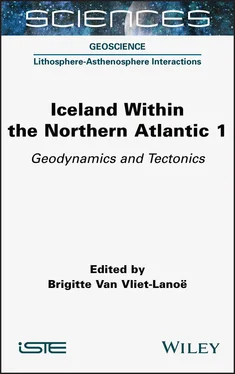For color versions of the figures in this Introduction see, www.iste.co.uk/vanvliet/iceland1.zip.
1
Iceland, in the Lineage of Two Oceans
Brigitte VAN VLIET-LANOË and Françoise BERGERAT with the collaboration of René MAURY, Hervé GUILLOU and Laurent GEOFFROY
There is no active region on Earth comparable to Iceland and its ocean environment ( Figure 1.1). Situated in the Northeast Atlantic, Iceland is indeed located within a particularly complex geodynamic evolutionary domain, illustrating the problems inherent to the break-up of continents in the plate tectonic model, especially the recycling of ancient structures such as the suture of the Iapetus Ocean ( section 3.2.2.3) and its paleoslab active during the Silurian. The latter has been mapped along the eastern coast of Greenland and is associated with calc-alkaline palaeo-volcanism (Andresen et al. 2007; Rhenström 2010).
The existence of Iceland probably dates back to the Oligocene. Its position east of Greenland and its insularization make it a key witness of the great changes controlling the evolution of the oceanic circulation. It has thus controlled the evolution of the climate since the Neogene, through the North Atlantic Current. It has also been, since 9 My, a key recorder of the onset of glaciation in the northern hemisphere, and also of glacier–volcanism interactions. Its location in the middle of the Greenland–Faroe Islands Ridge (GFIR) controls the descent of cold salty waters from the Arctic and North Atlantic into the thermohaline circulation section 3.4of Volume 2).
Figure 1.1summarizes the broad physiographic features and toponymy of the different structural domains (ridges and basins) of the North Atlantic and the Labrador-Baffin axis (LBA) on both sides of Greenland.
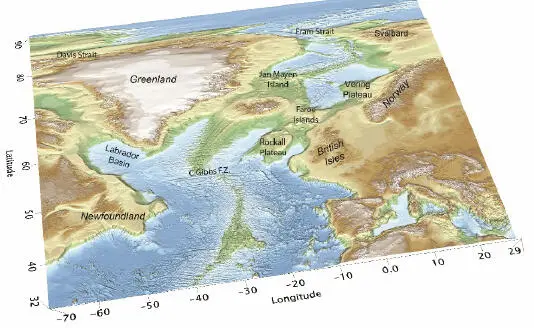
Figure 1.1. The Northeast Atlantic Ocean and the Labrador–Baffin axis (Gebco 2019 base, L. Gernigon processing)
These submerged domains are made up of lithospheres of oceanic and continental nature ( section 3.2) with, sometimes, uncertain limits between these two types.
The emerged geology of Iceland shows a relatively recent differentiation. Large outcrops of so-called ancient basalts (15–5 My, in blue in Figure 1.2(b)) occupy coastal areas and are overlain by younger lavas (between 5 and 7 My, in green). This second generation of basalts is itself intersected by an active rift zone associated with Pleistocene (gray) and Holocene (pink) volcanism that crosses the whole island from south to north. In addition, four ice sheets cap presently the island in relation with especially wide brown bands ( Figure 1.2(b)), which are the traces of subglacial volcanism, witnesses of a wider extension of the glaciers. It is also associated with a strong sedimentary splay along its southern coast (in light blue). Iceland has thus experienced a very complex history.
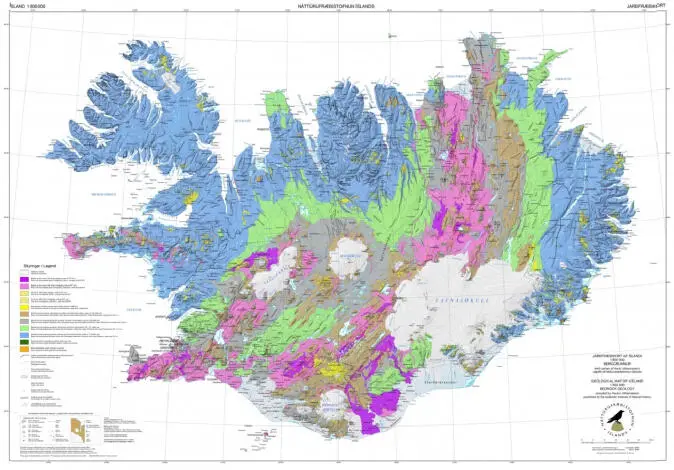
Figure 1.2. (a) Geological map of Iceland, originally at 1/600,000e (H. Johanesson 2014). Náttúrufræðistofnun Ísland (Icelandic Institute of Natural History) (available at: https://en.ni.is/resources/publications/maps/geological-maps)
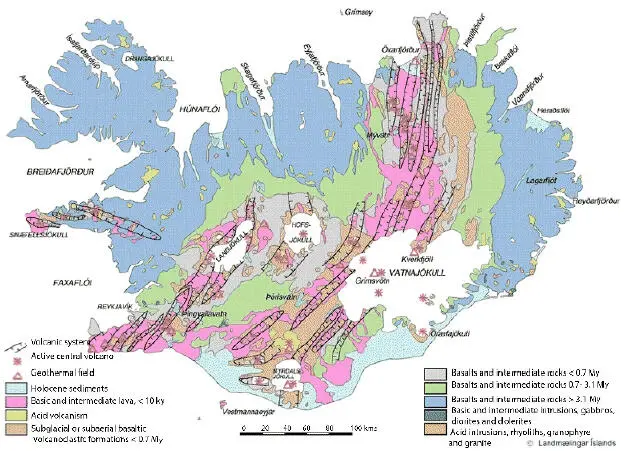
Figure 1.2. (b) Simplified geological map of Iceland (Icelandic Geographical Institute/Landmælingar Ísland)
1.1. Geographic and geodynamic context
The surface of Iceland appears as a vast plateau of about 600 m altitude ( Figure 1.3, in orange), overlain by four large volcanic systems covered by four wide ice caps. Another surface, called strandflat, surrounds the island at about the level of the present coast and extends into the sea down to about −50 m; it is underlined by large swarms of small islands. Finally, a lowered submarine plateau surrounds the island to a depth of 300 m ( Figure 1.3). The fact that it is cut by Neogene glacial scouring attests to its age ( section 3.2of Volume 2).

Figure 1.3. Current morphology of Iceland. (a) A volcanic island shaped and occupied by glaciers and whose submarine plateau was indented by Neogene glaciations (GEBCO 2019 data). (b) Ice-free topography (modified from the “Digital Elevation Model” published by Bjorsson, 2017)
The oceanic domains are fundamentally segmented: the basins are separated from each other by transform faults, such as the Ungava Fault in the Davis Strait between the Labrador Sea and Baffin Bay, or those of Charlie–Gibbs and Jan Mayen in the Northeast Atlantic, or by ridges transverse to the oceanic opening axes, such as the Greenland–Iceland–Faroe Islands Ridge. The entire region, including the Labrador-Baffin axis, Greenland and the Northeast Atlantic Ocean in the strict sense is referred to as the North Atlantic domain.
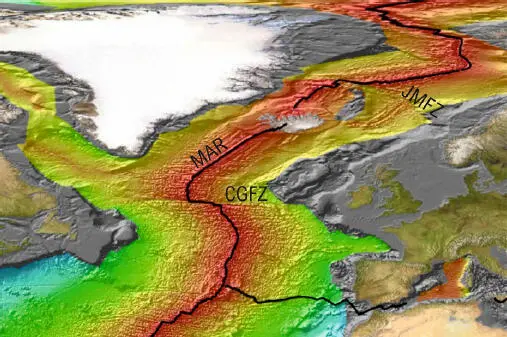
Figure 1.4. The northern part of the Mid-Atlantic Ridge, modified from (Müller et al. 2008)
COMMENT ON FIGURE 1.4.– The colors represent the age of the ocean floor, with redorange corresponding to the period 20–0 million years ago. The opening of the North Atlantic began about 60 million years ago. CGFZ: Charlie–Gibbs Fracture Zone; JMFZ: Jan Mayen Fracture Zone; MAR: Mid-Atlantic Ridge .
Iceland is generally presented as arising from the interaction between a thermal anomaly in the upper mantle, interpreted as a hot spot at the top of a plume, and a major axis of oceanic expansion, the Mid-Atlantic Ridge (MAR ) ( Figure 1.4).
The physical, chemical and dynamic characteristics of the Icelandic crust and lithosphere, and more generally of the Northeast Atlantic domain within which it is located, do not fit easily into simple models of continental break-up and accretion of the oceanic lithosphere. Understanding the origin of Iceland requires going back to the history of continental fragmentation between the North American and Eurasian plates in the Meso-Cenozoic (from 250 My). This history was characterized by the temporary individualization of a tectonic plate, Greenland, within a domain deeply marked by the heritage of the Caledonian collision (440–410 My).
1.2. Components of the North Atlantic domain
The major components of the North Atlantic domain are the MAR, the North Atlantic Igneous Province, the Icelandic hot spot and the GFIR.
1.2.1. The Mid-Atlantic Ridge
The MAR is a succession of ridge segments that range from the South Atlantic near Bouvet Island (latitude 54° S) to the North Atlantic, south of the Arctic Circle (latitude 87° N). In its southern part, it marks the boundary between the South American and African plates and in its northern part, it defines the boundary between the Eurasian and North American plates.
These segments are significantly offset by transform faults or zones. The two most important transform zones in the North-MAR are the Jan Mayen Fault Zone (latitude 71° N) and the Charlie–Gibbs Transform Zone (latitude 53° N), which limits to the south the North Atlantic oceanic domain sensu stricto ( Figure 1.4). The Icelandic Rift, which represents the part of the ridge that emerged in Iceland, is itself currently shifted about 100 km eastward from the axis of the MAR ( Chapter 2).
Читать дальше
